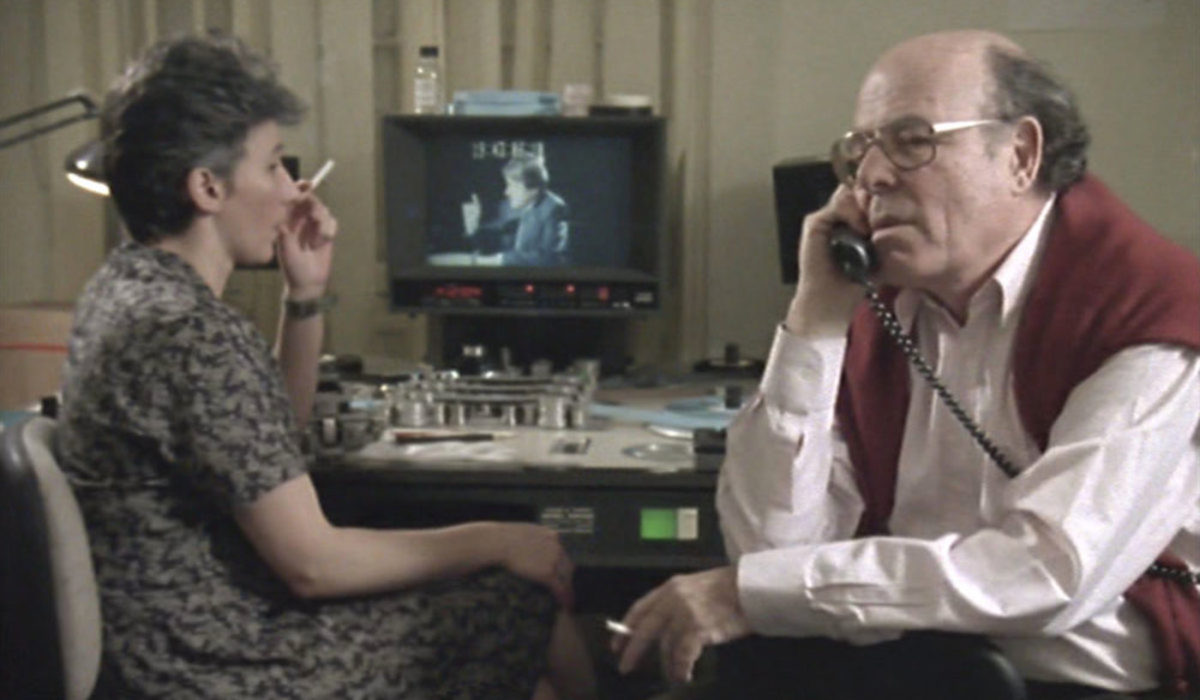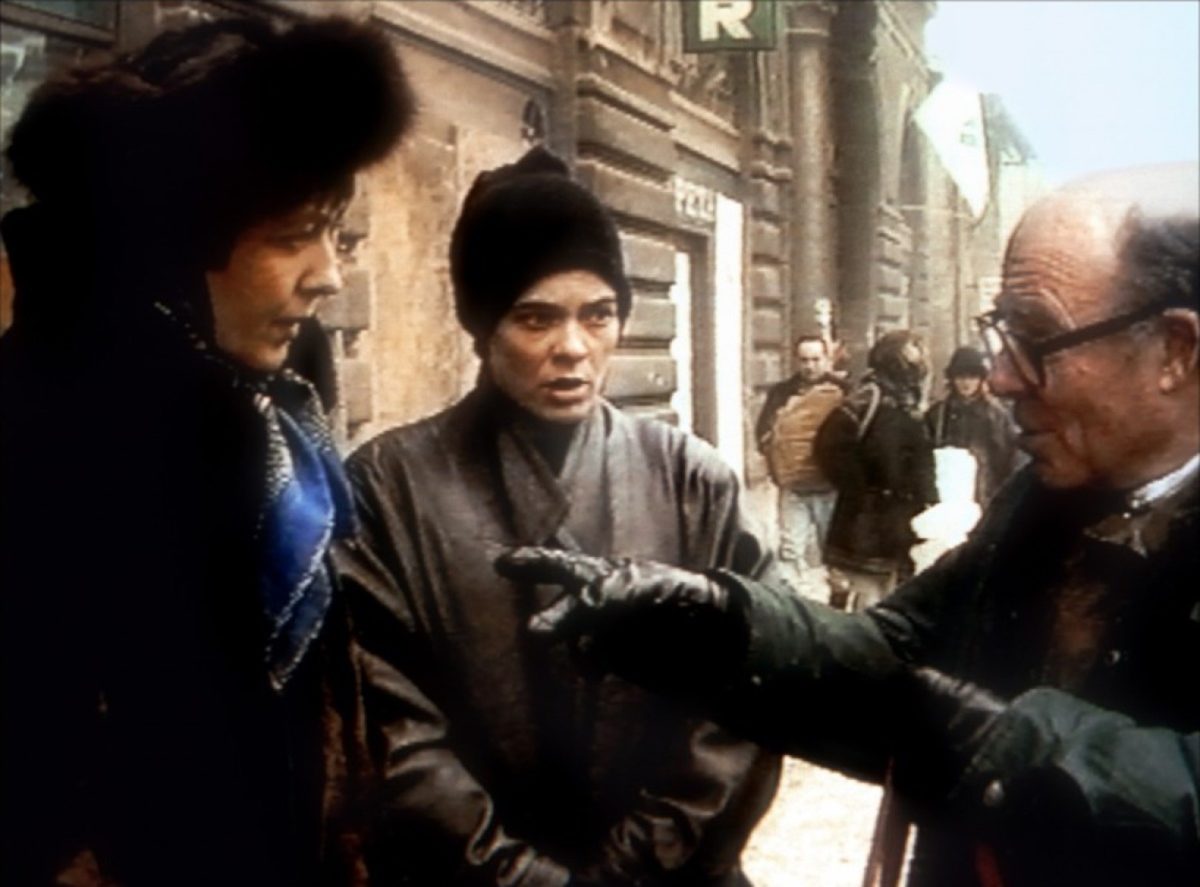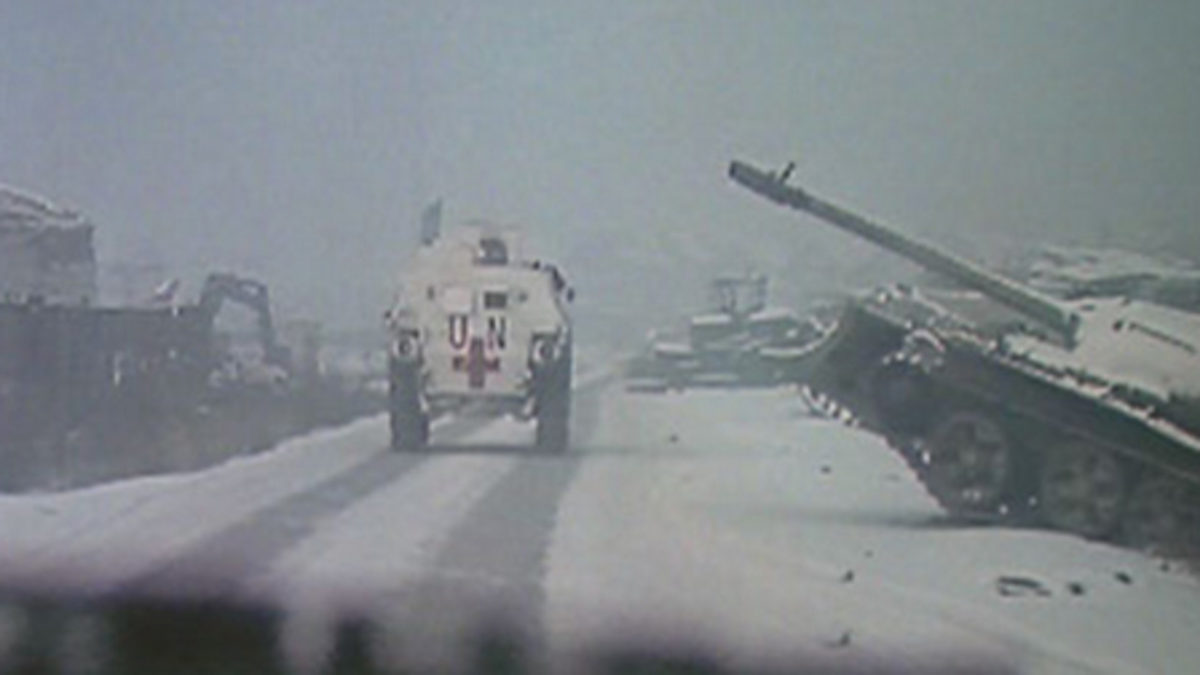Marcel Ophuls’s Veillées d’armes (The Troubles We’ve Seen, 1994), subtitled Histoire du journalisme en temps de guerre (A History of Wartime Journalism), is nearly four hours long and affords the luxury of difficulty and complexity that is often absent from wartime journalism itself. It presupposes the viewer’s undivided attention for a considerable time span, quite unlike the evening news. This is an even greater challenge given that the topic at hand is the early 1990s Balkan wars as witnessed from Sarajevo, a conflict that attracted media attention due to being spectacularly violent, but whose underlying causes were unexcitingly intricate and difficult to unpack: religious and ethnic differences; nationalist ambitions of several ex-Yugoslav countries at a historical moment when Eastern Europe was suffering all-around drastic political reorganization; the dissolution of different peoples temporarily bound together under the dictatorship of Josip Broz Tito, who, legend has it, had caused Serbs, Croats and Bosnians up until 1980 to all think of themselves as “Yugoslav”.
In Paul L. Moorcraft and Philip M. Taylor’s Shooting the Messenger: The Political Impact of War Reporting, the authors assess that “[t]here were many pictures, but profound analysis was rare” in reporting on the dissolution of Yugoslavia, and suggest the international media’s often exoticizing takes on these countries where, as an American satirist put it, “the unpronounceables were killing the unspellables.” Ophuls’s documentary is never as trenchant in its verdict, preferring to orchestrate opposing viewpoints, yet it does suggest an often-faulty channel of intercultural communication in this late-millennium Babylon. Referring strictly to language, beside Serbo-Croat, French, English and German, one can also hear faulty, tentatively spoken French and German. The inadvertently perverse effect of this, of course, is that the best and deepest understanding, despite the best intentions, in this Mecca of newcomer observers, seems to be taking place between Ophuls and the foreign journalists, or among the delegates themselves. Even when Ophuls addresses local journalists—Oslobodjenje’s Gordana Knezevic and Vlado Mrkic—the camaraderie between the filmmaker and the interviewee seems to wither into humanitarian generalities.
As a documentary filmmaker, Marcel Ophuls is an indisputable provocateur, believing that the end justifies the means—i.e. the occasional heavy-handed docu-fiction interludes, the unexpected Marx brothers segment of over-the-top war satire to curb the general seriousness, the relentless posing of none too delicate interview questions etc. His presence in the film is only a touch less intrusive than Michael Moore’s, and although he does travel to Sarajevo to observe journalists observing the war, he places himself at an ostentatious distance from the people under siege—he travels to Venice and back to Vienna, geographically close cities that seem nevertheless a world apart, to take a break from the other Europe. Even the conversations with journalists are often thickly filtered. They discuss general considerations about the job (the perks of lodging in the best place in town and having guaranteed wine at dinner, the rush of adrenaline that comes with being in the middle of things, the cost for networks to send their employees into the line of fire), while keeping the apocalyptic cityscape an occasional intrusion. If anything, the conflict seems to be stagnating and normalized, with snipers close by on the roadside, visible destruction and an ominous perception of the future (the best that seems to be plausible to happen soon is for the violence to end and be forgotten), but enough time to breathe, draw conclusions and wait for information about the state of things to trickle down.

Having the good fortune to enlist as producer the renowned cinephile Bertrand Tavernier (film publicist turned prolific director & author of the recent My Journey through French Cinema), Ophuls has plenty of formal freedom and, presumably, access to copyrighted material. He quotes from a variety of films, from his father’s works to Joris Ivens’s, which weave themselves into the fabric of the film. A Bing Crosby musical called Holiday Inn (Mark Sandrich, 1942) is initially festive to the point of irony, since Holiday Inn is also the hotel where foreign journalists are sheltered, in notably less glamorous conditions (for one thing, heating seems an unattainable luxury); on the other hand, a montage of city images set to the soundtrack of Crosby’s ‘Happy Holidays’, given its place in the least dramatic part of the film and combined with the picturesque snow that has set over the city, does attain a certain festive aura. A Marlene Dietrich scene from Billy Wilder’s Witness for the Prosecution (1951) where the sensual blonde, a victim of wartime scarcity, obtains rare goods from an American soldier, is a concise introduction to the gap in prosperity that Westerners and Bosnians have been exposed to; this is later developed when Ophuls reminds us that, whatever real peril and harsh conditions these foreigners are about to face, the local population has even less than them to count on. Similarly, two Howard Hawks films (Only Angels Have Wings, 1939; and His Girl Friday, 1940), showing two capable “fast talking dames” in mostly male environments, are useful in announcing Ophuls’s interest in whether there’s a gender specificity to the job.
An interview with writer, war correspondent and full-time risk-taker Martha Gellhorn has a quite baffling tone which might jolt the peacetime-dwellers’ sensibilities, despite the coziness of the set-up and the casual phrasing of her remarks: she recalls gaining access to an off-limits war zone by claiming she wants to cover the “woman’s angle” on things; thinks war correspondents are privileged and should not be pitied, given their ability to elude boredom; and gives off a constant seen-it-all disenchantment which is as persuasive and admirable as it is frightening. Two female reporters whose interviews are often cross-cut on similar questions, the French Martine Laroche-Joubert and the Canadian Hilary Brown, seem to have quite different outlooks and conclusions regarding their jobs: the first is persistently ardent and involved in the benefits as well as structural problems of her work, while the other is serenely professional. The director, along with editor Sophie Brunet, allows interviewees ample time to speak for themselves so that viewers have time to get a sense of the person before them, though a lot of the final impressions are shaped by editing tricks or metacinematic interludes.
The narration is neither linear nor cause-and-effect driven. Digressions and temporal jumps include, for instance, the execution of Iranian ex-Prime Minister Amir Abbas Hoveyda in 1979—which is neither contemporary, nor geographically proximate, but rather a sample of crisis reporting from another time. Another episode involves debating a famous photograph by Robert Capa that was either the snapshot of a soldier in the very moment before his death, a treacherous forgery of a soldier’s death to gain emotional impact or, simply, a reenactment that was not supposed to be taken at face value, but was interpreted in such a manner due to the caption which accompanied it in the magazine that circulated it most widely. The interruptions make a point, if only an oblique and idiosyncratic one, even when incongruously introduced—the director’s quoting of his father’s films, De Mayerling à Sarajevo (1940) and Lola Montès (1955/1969), has other motivations beside biographical: the former discusses another Sarajevo act of violence, the 1914 assassination that started the First World War; and the latter is used to literalize the voyeuristic quality of the war—the trashy, pulpy exposure of the eponymous Lola is somewhat similar to common televisual spectacle.
The documentary has its share of questionable editing decisions and is arguably over-explicit on occasion, but it is rarely redundant or even averagely predictable. When it seems that the profile of the intellectual who would stray to the land of the “unspellables” becomes discernible, there comes another surprise. In one instance, philosopher Bernard-Henri Lévy comes out of his shell in trying to understand the world and faces his trial by fire, seeming totally unprepared. Another over-confident delegate, journalist Paul Marchand, talks with conviction about the unnecessary pampering that journalists require, which might even mean trading their independence for security—and Ophuls duly lets him make his point, but then adds an intertitle on his subsequent fate: “severely wounded in Dobrinja in 29 october 1993 while driving his non-bulletproof car.” (In fact, with even more hindsight, we now know that Marchand’s way of perceiving his job was adrenaline-fueled enough to make for an action movie-biopic.) Among other endearing, but emotionally depleting scenes is Ophuls’s encounter with Nermin Tulic, an actor who was maimed by Serbs—whom Ophuls provokes by asking whether he would perform knowing the Serbs who hurt him were in the audience. He first answers that he would perform for Serbs, and that his wife is Serbian; then he concludes that the Serbs who hurt him wouldn’t be in the theater.

The interventions flow long enough for the contradictions between viewpoints to come into focus naturally. For instance, Phillip Knightley, historian and author of The First Casualty, seems to generally distrust the shallowness of shocking war imagery and immediate reports; he sounds convincing and eloquent, but inevitably seems square while being filmed in his tranquil house, with a dog and a bird for pets that are frequently objects of attention for the camera, and, towards the end of this intense documentary, his comfortable distance seems untrustworthy of producing more comprehensive knowledge than those who experience the war firsthand. Like New York Times journalist John Burns, who seems to have really settled in during his stay in Sarajevo, is attacked for pretending to have an unbiased view of the Serbian aggressors while only seeing the war from the Bosnian vantage point, but despite this likely drawback he certainly has time to develop a ‘character’.
Burns is lively and professional in a Hawksian way and an engaging interlocutor and mediator. One of the most moving scenes of the documentary, in which he leads Ophuls into a Bosnian hospital to show the very rudimentary conditions for treating the wounded, goes beyond spectacular images to show the dishearteningly poor quality of life in Sarajevo. Another scene where he acts as an agent is an impromptu poll on whether citizens agree with the mayor’s statement that Sarajevo has a lesser need for humanitarian aid than other, more war-stricken parts of Bosnia. A man who speaks out against Muslim stereotypes and an older woman who tries to respond to their questions in spite of very rudimentary verbal communication totally capture the attention of the camera, surpassing the media format where reporters speak for the exoticized locals, by proving themselves very capable of speaking for themselves.
Ophuls’s documentary aims for uncompromising complexity, taking the acceptable risk of alienating viewers who want their news from far-away lands pre-digested. It is unquestionably a long documentary—and may seem even longer than four hours due to its many changes of pace and the sprawling network of interviewees it approaches—but its difficulty is central to its endeavor. Ophuls challenges viewers to second-guess simplified accounts of what is going on far away, in different cultures, spurring from incomprehensible, millennial historical evolution, and usually tailored to viewers’ political prejudice. News doesn’t make itself, it is made by people hired by media institutions, and any valid reconstruction of the reality behind the scenes must take this mediation into account.
